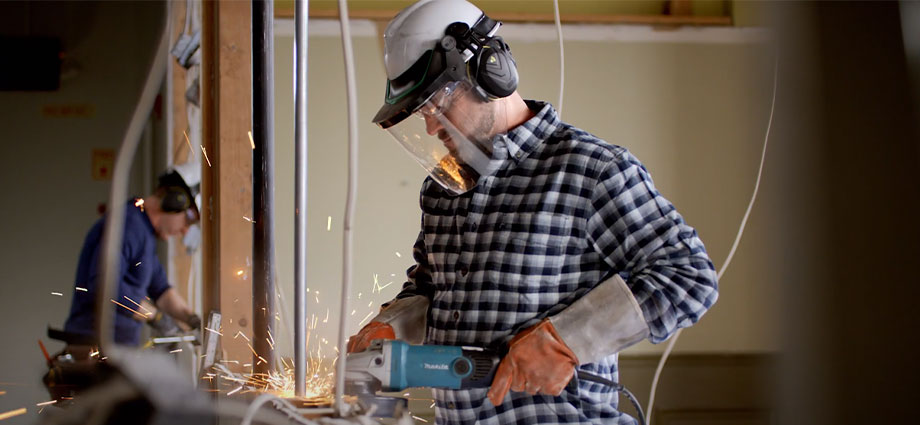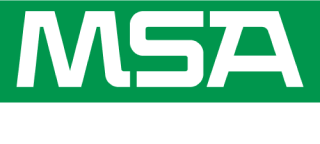
Millions and millions of employees show up, do their job, clock out, and go home, day after day, month after month, year after year. For some 22 million, however, this workday routine harbors a hidden danger: potential for permanent hearing loss from exposure to loud noise in the workplace.1
Yet, according to every major regulatory and protection agency from the Occupational Safety and Health Administration (OSHA) to the World Health Organization (WHO) to the National Institutes of Health (NIH), workplace hearing loss is 100 percent preventable.
Why, then, are U.S. businesses paying more than $1.5 million annually in penalties for improper implementation or non-compliance with OSHA’s hearing conservation program?1
Perhaps it’s because when it comes to loud and harmful noise in the workplace, people understand the need for hearing protection devices (HPDs) yet are unaware of what goes into selecting proper HPDs.
Not only can proper HPDs protect employees against hearing loss, they have the potential to save employers an estimated $242 million annually in workplace-related hearing loss disability through Workers’ Compensation.1

Download our whitepaper to learn more!
RISK FACTORS
When workplace noise and vibration occur at a high level or continue for an extended period of time, workers are at higher risk of experiencing temporary or permanent hearing loss.
Among those at high risk include industrial workers who are exposed to potentially damaging, high-noise situations as a result of equipment and processes associated with production, manufacturing, foundries, mills, and shops.
These high-noise situations often result from a combination of machine components and such operations as: crushing, cutting, extrusion, grinding, punching, riveting, and sanding.
While machine work and operations may be all in a day’s work for some employees, the associated noise can result in hearing loss that’s gradual, painless, and progressive. Unfortunately, it affects some 24 percent of U.S. workers, making occupational hearing loss one of the nation’s most common work-related hazards.2,3
3 HEARING-RELATED ISSUES CAUSED BY WORKPLACE NOISE
The cost of noise-induced hearing loss is shocking with a wide-reaching and holistic effect on a person’s physical, emotional, and occupational well-being.4
Physical: Excessive and/or prolonged noise can destroy inner ear nerve endings, causing permanent damage that affects a person’s ability to perform daily tasks.
Psychological: Noise-induced hearing loss can cause a wide range of mental disorders such as irritability, sleep disturbances, anxiety, depression, isolation, and hostility.
Occupational: Hearing impairment often interferes with communication, concentration, and job performance; is a contributing factor to workplace accidents and injuries; and may have a negative impact on a worker’s lifetime earning potential.5
3 SAFEGUARDS EMPLOYERS CAN PUT INTO PLACE
So, what can employers do to help their employees reduce exposure and conserve their hearing? Namely, implement an effective and ongoing hearing conservation program that includes three key components.
Naturally, the goal of employers through a hearing conservation program is to ensure safe, healthful working conditions for employees. OSHA Standard 29 CFR 1910.95,6 Occupational Noise Exposure is a good place to start, along with the hearing conservation guidelines issues by the Canadian Standard Association (CSA), American National Standards Institute (ANSI), and International Association for Standardization (ISO). Under these guidelines, employers with employees exposed to an 8-hour TWA (time-weighted average) of 85 decibels or greater should:
- Monitor exposure levels and repeat monitoring when noise increases as a result of changes in production, process, equipment, or controls.
- Perform baseline hearing tests (audiograms) on affected employees.
- Conduct annual audiograms on affected employees and compare them to baselines.
Employers must comply with OSHA’s attenuation guidelines, as outlined in the hearing protection standard Part 1910, Subpart G, Appendix B. The guidelines state that employers must calculate attenuation values and evaluate HPD attenuation for the noise environment in which it will be worn. For example, while earplugs have their rightful place in some hearing conservation programs, foam earplugs have the potential to deliver more attenuation variability than, say, custom-molded earplugs. Earmuffs, on the other hand, deliver less attenuation variability than either foam or custom-molded earplugs. The attenuation calculation, therefore, should be a key determinant in selecting the proper solution for the environment.
While the OSHA standard requires the use of hearing protection, the standard does not mandate just what kind of HPDs to provide. Instead, it states in 1910.95(i)(3) that “employees shall be given the opportunity to select their hearing protectors from a variety of suitable hearing protectors provided by the employer.” This can leave employers feeling a bit in the dark as to how to decide which HPDs to offer. One consideration should be comfort. Why? Because research shows workers will not wear HPD consistently and correctly if it is ill-fitting, awkward, or uncomfortable for any length of time. Not wearing HPD, of course, leads to increased noise exposure and greater risk for hearing loss, as demonstrated by a five-year study of audiometric data from 20,000 employees. 7 This same study also concluded that HPDs should be selected as much for comfort, convenience, and communication, as for ability to reduce noise. While earplugs may, at first, seem like a simple, obvious, and cost-conscious solution to noise in the workplace, they are not necessarily the best solution for the grimy, grubby conditions of industrial facilities. In general, safety-conscious employers will want to evaluate over-the-ear, cap-mounted HPDs, which are more suitable for their unique working environment and comfortable enough for workers to wear all the time every time.
EFFECTIVE – AND COMFORTABLE – HEARING PROTECTION There’s no getting around it. To be effective in helping prevent workplace-related hearing loss in noisy environments, HPDs must be worn constantly when noise levels are high. That means they must be comfortable enough for workers to wear them for as long as necessary. The fact is, if HPDs are removed for even a brief period of time, hearing protection and attenuation are dramatically reduced.
The new MSA V-Gard® Cap-Mounted Hearing Protection Line provides enhanced comfort, top-of-the-line performance, and upgraded style and fit. Learn more about MSA’s hearing protection line on our website or download our whitepaper – 4 Things Every Safety Manager Must Know About Hearing Protection – above.
Sources:
(1)U.S. Department of Labor Occupational Safety and Health Administration. “Occupational Noise Exposure.” https://www.osha.gov/SLTC/noisehearingconservation/
(2)Centers for Disease Control and Prevention. “Noise and Hearing Loss Prevention.” https://www.cdc.gov/niosh/topics/noise/default.html
(3)Centers for Disease Control and Prevention. “Occupational Hearing Loss (OHL) Surveillance.” https://www.cdc.gov/niosh/topics/ohl/default.html
(4)Mil Med Res. “The Impact of Hearing Impairment and Noise-Induced Hearing Injury on Quality of Life.” https://www.ncbi.nlm.nih.gov/pmc/articles/PMC4830069/
(5)Hearing Health Foundation. “Workplace Hearing Loss.” https://hearinghealthfoundation.org/hearing-loss-in-the-workplace/
(6)U.S. Department of Labor Occupational Safety and Health Administration. “By Standard Number / 1910.95 – Occupational noise exposure.” https://www.osha.gov/laws-regs/regulations/standardnumber/1910/1910.95
(7)US National Library of Medicine National Institutes of Health. “Do Hearing Protectors Protect Hearing?” https://www.ncbi.nlm.nih.gov/pmc/articles/PMC4671486/
Additional Sources:
National Institutes of Health. “Noise-Induced Hearing Loss.” https://www.nidcd.nih.gov/health/noise-induced-hearing-loss
NIOSH. “Controls for Noise Exposure.” https://www.cdc.gov/niosh/topics/noisecontrol/
OSHA. Occupational Safety and Health Standards, Subpart G, Occupational Health and Environmental Control, Appendix B. https://www.osha.gov/pls/oshaweb/owadisp.show_document?p_id=9737&p_table=STANDARDS
Canadian Centre for Occupational Health and Safety. “Hearing Protectors Fact Sheet.” https://www.ccohs.ca/oshanswers/prevention/ppe/ear_prot.html








